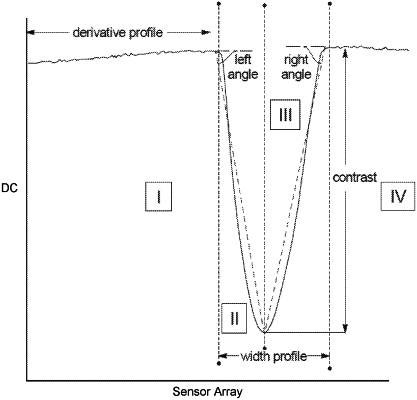| CPC A61B 5/6847 (2013.01) [A61B 5/0086 (2013.01); A61B 5/489 (2013.01); A61B 17/29 (2013.01); A61B 90/361 (2016.02); A61B 2017/00057 (2013.01)] | 10 Claims |

|
1. A system used to determine if a ureter is within a region proximate to a working end of a surgical instrument, the system comprising:
at least one light emitter disposed at the working end of the surgical instrument, the at least one light emitter configured to emit light of two different wavelengths,
at least one light sensor array disposed at the working end of the surgical instrument opposite the at least one light emitter, the at least one light sensor array configured to detect light at the two different wavelengths, the at least one light sensor array comprising an array of individual light sensors each configured to provide a signal having an alternating current (AC) component and a direct current (DC) component for each wavelength,
a controller coupled to the at least one light sensor array and configured to determine a ratio of the transmitted light at two different wavelengths, to determine if a dip or decrease in the DC component of the signal between a first end and a second end of the at least one light sensor array is present in the non-pulsatile component of the signal from the individual light sensors of the at least one light sensor array for each of the two different wavelengths, to determine a symmetry of the dip about an axis of symmetry if a dip is determined, and to indicate if the ureter is within the region proximate to the working end of the surgical instrument based on the ratio and the symmetry.
|